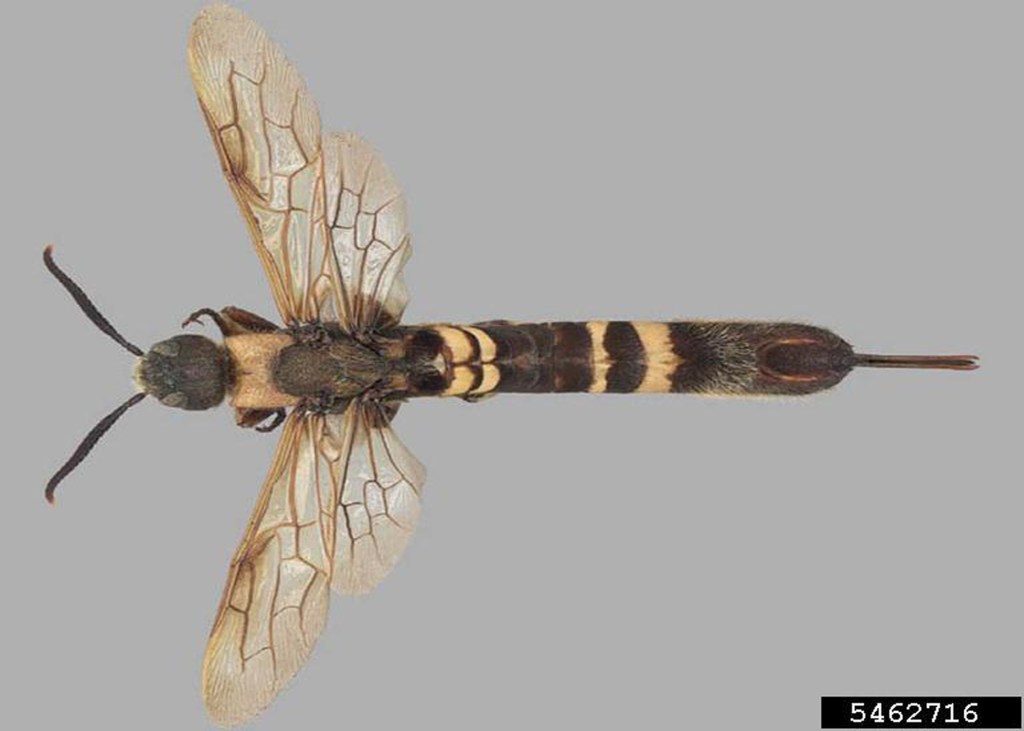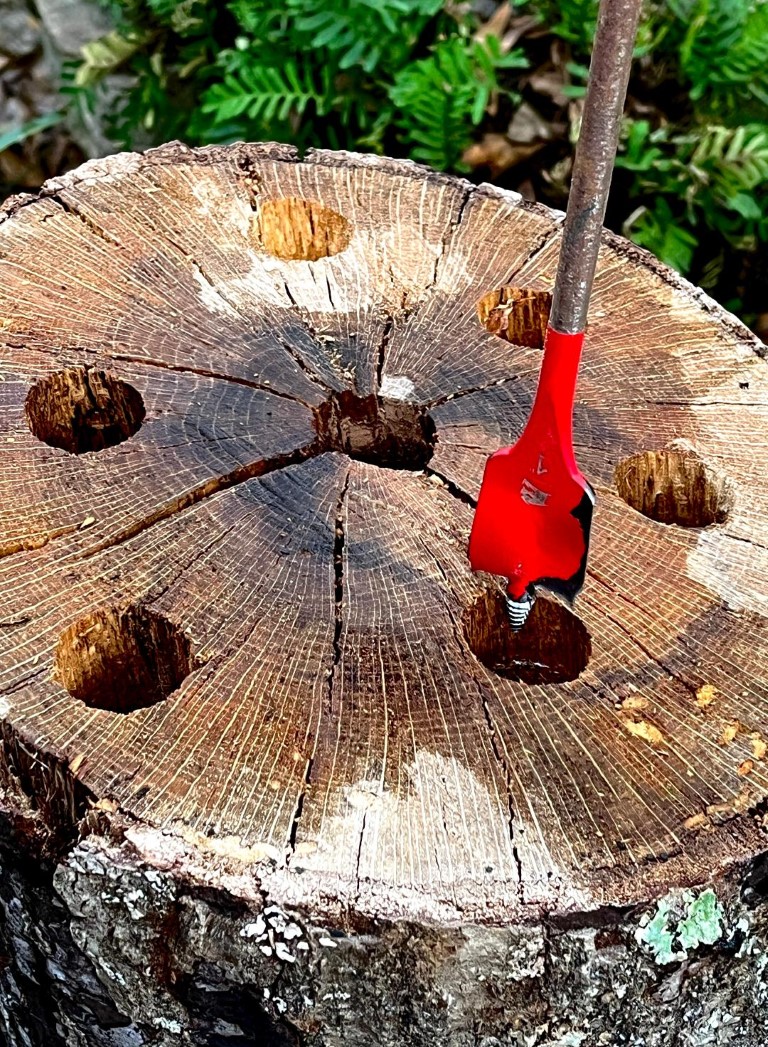Asian hornet look-alikes confuse Mississippians
Published 11:31 am Thursday, July 1, 2021

- The nonnative Asian horntail wasp arrived in the U.S. in the 1970s and is becoming more noticeable. It is one of five pests in Mississippi that can be confused with the Asian giant hornet, also called a “murder hornet.” (Photo by Pest and Diseases Image Library, Bugwood.org) Alt- text: A photo of a female Asian horntail wasp.
By Susan Collins-Smith
MSU Extension Service
Mississippi is home to several flying insects that can be mistaken for the invasive Asian giant hornet discovered in Washington in 2020.
Blake Layton, Mississippi State University Extension Service entomologist, said this insect, also called a “murder hornet,” has not been confirmed outside the Northwest. However, Layton said he has been contacted by people who think they have seen these hornets in Mississippi and Alabama in the last few weeks.
“Asian giant hornets are still confined to a small area of Washington state, and they are working to eliminate them there,” Layton said. “We do not have Asian giant hornets in Mississippi, and it is very unlikely that they will occur here anytime soon. But we do have one large stinging insect that is almost as big, and we do have one nonnative hornet that is already established here.”
The Asian horntail wasps is one of five insect species found in Mississippi that can be confused with the Asian giant hornet. Southern yellowjacket queens, cicada killer wasps, European hornets and periodic cicadas also look like this pest.
Asian giant hornets can be more than 2 inches long. They have large, orange heads with big mandibles used to kill their prey, which include honeybees. Their bodies are black with orange stripes, and they have large, clear wings. Their long stingers can inject potent venom that sometimes causes severe allergic reactions and possibly death in humans and large animals.
A few Asian hornets can wipe out a colony of bees in a matter of hours.
The nonnative Asian horntail wasp, or wood wasp, arrived in the U.S. in the 1970s and is becoming more noticeable. Males vary in coloration and are rarely seen. The female has a long, black abdomen encircled with yellow rings and a single band of fine hairs. It has a bright-yellow thorax immediately behind its head and wide, yellow and black bands on its legs. The female horntail wasp can have fine hairs on other parts of its body. While this wasp has a horn spike on the top rear of its abdomen, what appears to be two formidable stingers on the end of its abdomen, and a large ovipositor for boring into wood to lay eggs, it does not sting.
Southern yellowjacket queens also look a lot like Asian giant hornets with their large, orange-and-black bodies. The queens are much larger than the workers and are sometimes spotted in the spring as they search for places to build nests. They nest below ground in groups that can include hundreds to thousands of yellowjackets. They will aggressively defend the nest when disturbed.
Homeowners usually get stung when doing yardwork, such as mowing or trimming, that causes vibration of the nest.
Cicada killers are actually wasps more closely related to mud daubers. But one could be mistaken for an Asian hornet because of its sheer size and similar coloration.
“A big, female killer is just as big as an Asian hornet,” Layton said. “These wasps can catch a cicada and fly off with it.”
Cicada killers occur statewide but usually go undetected because of their social habits. They nest alone and rarely sting because they are not aggressive and do not defend their nests.
Like Asian giant hornets, European hornets are true hornets and are nonnative. Workers are about 1 inch long and queens are even larger. They are found mostly in north Mississippi. While they are uncommon, these hornets are spreading across the state. They also eat honeybees and can be minor pests in apiaries, Layton said.
They can be aggressive toward humans who get too close to their nests.
While periodic cicadas do not have the same body shape as Asian giant hornets, people can confuse them with the invasive pest. Both are large with orange-and-black bodies and large, clear wings, and they both make a buzzing sound in flight. There are several different broods, or species groups, of periodic cicadas that occur intermittently in the East and Midwest. Three broods appear occasionally in Mississippi.
“We have annual cicadas that occur every year, but this is not an emergence year for any of the three broods of periodic cicadas that we have in Mississippi,” Layton said.
Although these established species of hornets, wasps and bees can be nuisances to humans, they play important roles in the ecosystem. They feed on caterpillar larvae and other insect pests, providing some natural control. Bees pollinate plants as they collect nectar.
Layton recommends using control methods only when nests are near areas where humans might get stung.
Asian giant hornets are not pests that Mississippi beekeepers or anyone in the Southeast should be overly concerned about right now, said Jeff Harris, MSU Extension bee specialist.
“There is no evidence that we have high numbers of this pest or that they have established colonies in the U.S.,” Harris said.
Harris said varroa mites are the primary threat to bee populations right now. However, he, his colleagues and beekeepers worldwide are always on the lookout for emerging threats.
“We’ll definitely keep an eye on what develops with the Asian giant hornet. If it becomes established in the U.S., it could be devastating to bee populations,” he said. “But I think there are other, more concerning emerging pests and viruses that need to be higher on our watch lists right now.”
For more information on bees, wasps and other insects and how to control them, refer to Extension Publication 2331, “Control of Insect Pests In and Around the Home Lawn,” on the MSU Extension web site at https://bit.ly/35GbS1y.
For more information on honeybees and beekeeping, visit the beekeeping page on the MSU Extension web site at https://bit.ly/2Lbb2Ao.





